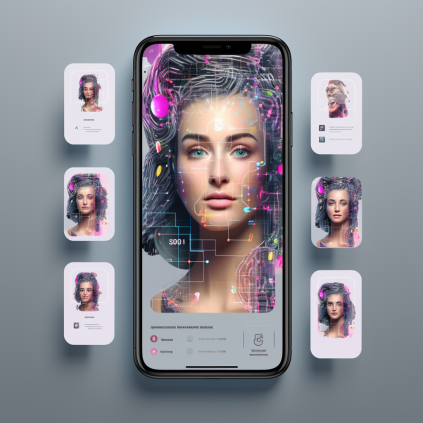Generative AI in UX/UI design: The world of User Experience (UX) and User Interface (UI) design is constantly evolving. In this dynamic landscape, designers are always on the lookout for innovative tools and technologies to enhance the user journey and interface aesthetics. Enter Generative Artificial Intelligence (AI), a game-changer in the realm of UX/UI design. In this blog, we’ll explore the fascinating world of Generative AI, its applications, and real-world examples that showcase its potential to revolutionize the way we craft digital experiences.


Generative AI in UX/UI design
Table of Contents
Understanding Generative AI in UX/UI Design
Generative AI refers to a subset of artificial intelligence that focuses on producing content, be it text, images, or even entire websites, autonomously. It leverages deep learning algorithms to generate new, creative content based on patterns it has learned from vast datasets. In the context of UX/UI design, Generative AI holds immense promise.
How Generative AI Works in UX/UI:
- Data Collection and Analysis: Generative AI systems are trained on large datasets of existing designs, user behaviors, and design principles. They analyze this data to understand patterns, trends, and best practices.
- Pattern Recognition: The AI identifies recurring design elements, layouts, color schemes, and user interactions from the training data. This helps it grasp what works well in UX/UI design.
- Content Generation: Based on its analysis, the AI can generate a wide range of design elements, including images, icons, layouts, and even written content like product descriptions or button labels.
- Feedback Loop: The AI learns from user interactions and feedback, allowing it to continually improve and adapt its design recommendations over time.
Applications and Use Cases of Generative AI in UX/UI Design


- Automated Wireframing:
Generative AI can quickly generate wireframes for web and mobile applications. By understanding design principles and user expectations, it can create wireframes that adhere to best practices, saving designers valuable time.
Example: A Generative AI tool can create a wireframe for an e-commerce website, optimizing the layout for ease of navigation and highlighting essential product details.
- Customized User Interfaces:
AI can personalize UI elements for individual users based on their preferences and past interactions. Personalization of look and feel enhances user engagement and satisfaction.
Example: An AI-driven mobile app can customize its home screen layout and content recommendations based on a user’s browsing history and preferences.
- Content Generation:
AI can create engaging content, such as product descriptions, user guides, and marketing copy. This will ensures consistency in messaging apart from saving time
Example: A Generative AI tool can generate product descriptions that are both informative and persuasive, helping e-commerce platforms populate their product listings more efficiently.
- A/B Testing and Optimization:
AI can run A/B tests and analyze the results to optimize UX/UI designs continually. It can suggest changes to increase conversion rates or improve user engagement.
Example: An AI-driven platform can automatically analyze user interactions with two different homepage layouts and recommend the one that leads to higher user retention.
- Design Accessibility:
Generative AI can assist in creating accessible designs by generating alternative text for images, suggesting color contrasts, and ensuring compliance with accessibility standards.
Example: An AI tool can analyze a web page’s images and generate descriptive alt text to make the content accessible to users with visual impairments.
- Prototyping:
AI can generate interactive prototypes of web or mobile applications, allowing designers and stakeholders to visualize and test concepts before development.
Example: An AI-powered prototyping tool can quickly create a clickable prototype of a new mobile app, enabling designers to gather early user feedback.
Real-World Examples of Generative AI in UX/UI Design
- Adobe Sensei:
Adobe Sensei employs Generative AI to simplify and accelerate the design process. It can automatically generate color palettes, suggest image enhancements, and even create custom brushes based on existing artwork.
- Runway ML:
Runway ML is a creative toolkit that utilizes Generative AI to assist designers. It offers a wide range of AI models for tasks

